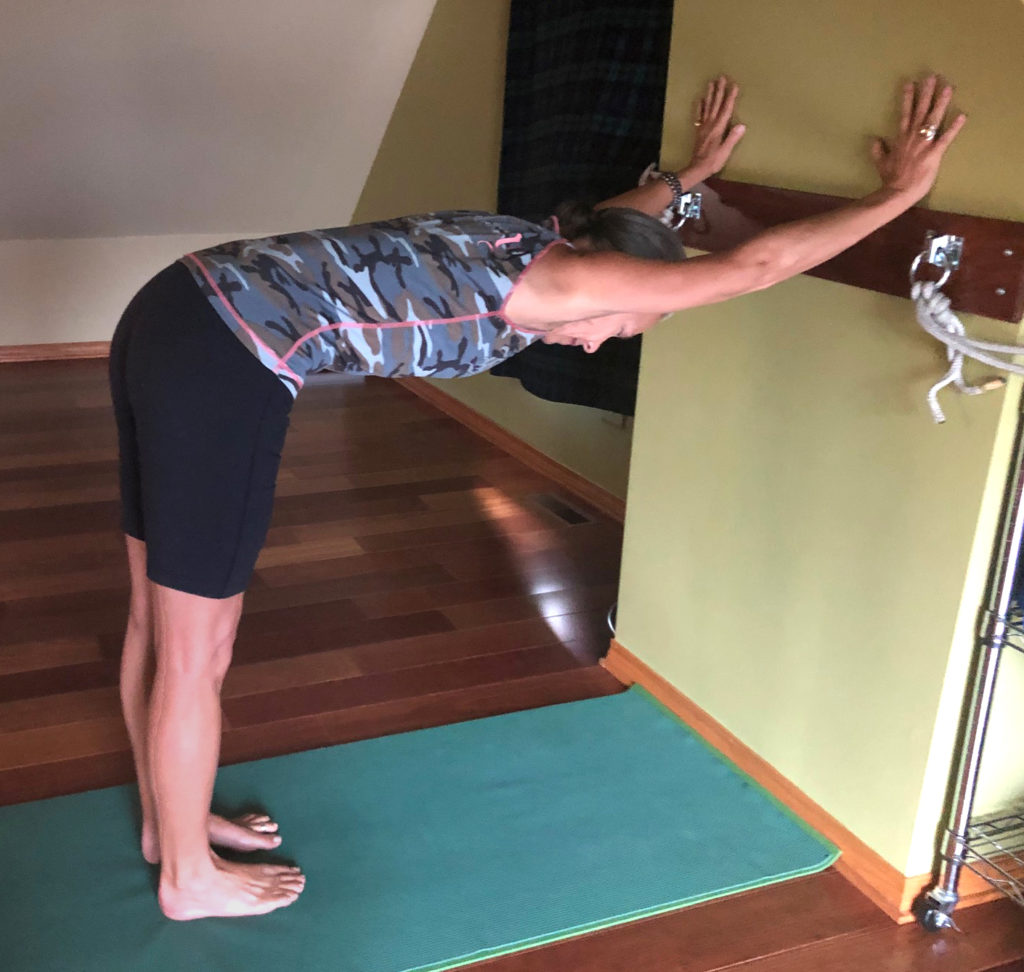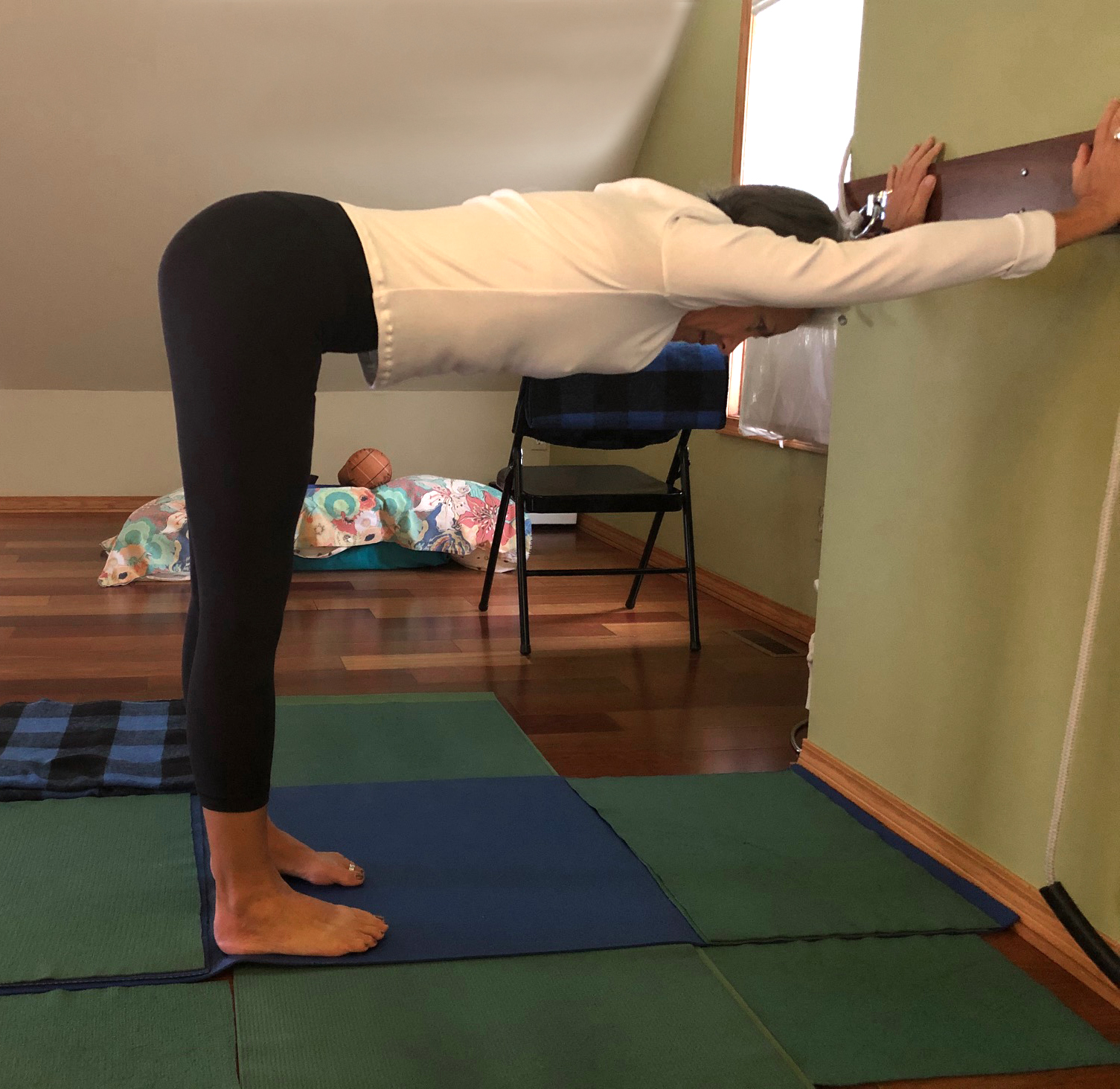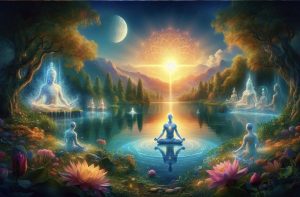The sedentary lifestyles of knowledge workers have them seated at a computer for several hours each day. Without daily movement that counteracts this inactivity, the space between spinal vertebrae and within all other joints in the body — shoulders, elbows, wrists, hips, knees, ankles, etc. — shrinks. Compression in the spine and joints registers as numbness, pain, weakness, and even loss of bowel and bladder control. Keeping active in holistic ways is a proven strategy for minimizing injury, maintaining balance, and ensuring continued health throughout one’s lifetime.
Yoga postures, such as Wall Stretch, support holistic health and movement whether your current condition allows you to stand or poor balance requires you to sit in a chair. Wall stretch prepares you for deeper inversions by lengthening and strengthening the spine, shoulders, elbows, and wrist joints. Your legs, feet, arms, and hands, are actively engaged in creating space between each spinal vertebrae, which moves tension and weight off the spine back into the body’s appendages. Practicing this pose and the accompanying yoga actions on a daily basis will dramatically improve posture, mobility, and mood.
Yoga Actions (Annamaya Kosha):
Begin by facing a wall. Firmly press the four corners of your hands — bases of the index and baby fingers and bases of the inner and outer palms — into the wall at shoulder height.
1) Inhale and imagine your spine moves in two directions — down toward your heels and up through the crown of your head.
2) On your exhale, step one foot back and then the other so you come into a right angle to the wall. To remove any collapse of your lumbar, draw your navel toward the back waist.

Yoga Actions (Pranamaya Kosha):
1) With your inner awareness, find the inner wall of your C7 — the large, protruding vertebra at the base of your neck.
2) Soften the C7’s inner wall toward the front of your throat. Notice how both the cervical spine and the lumbar spine lengthen.
Yoga Actions (Manomaya Kosha):
– rest in the pose by silently repeating to yourself “My spine is floating freely.”
NOTE: It may take more than one pose before you awaken these yoga actions or areas in your body and begin to feel the arising sensations and releases. In that case, apply the three yoga actions to the following poses –
SUPTA TADASANA
ALL FOURS/TABLE TOP
TADASANA
ADHO MUKHA SVANASANA
For more yoga actions and teachings, click here. Namaste.





